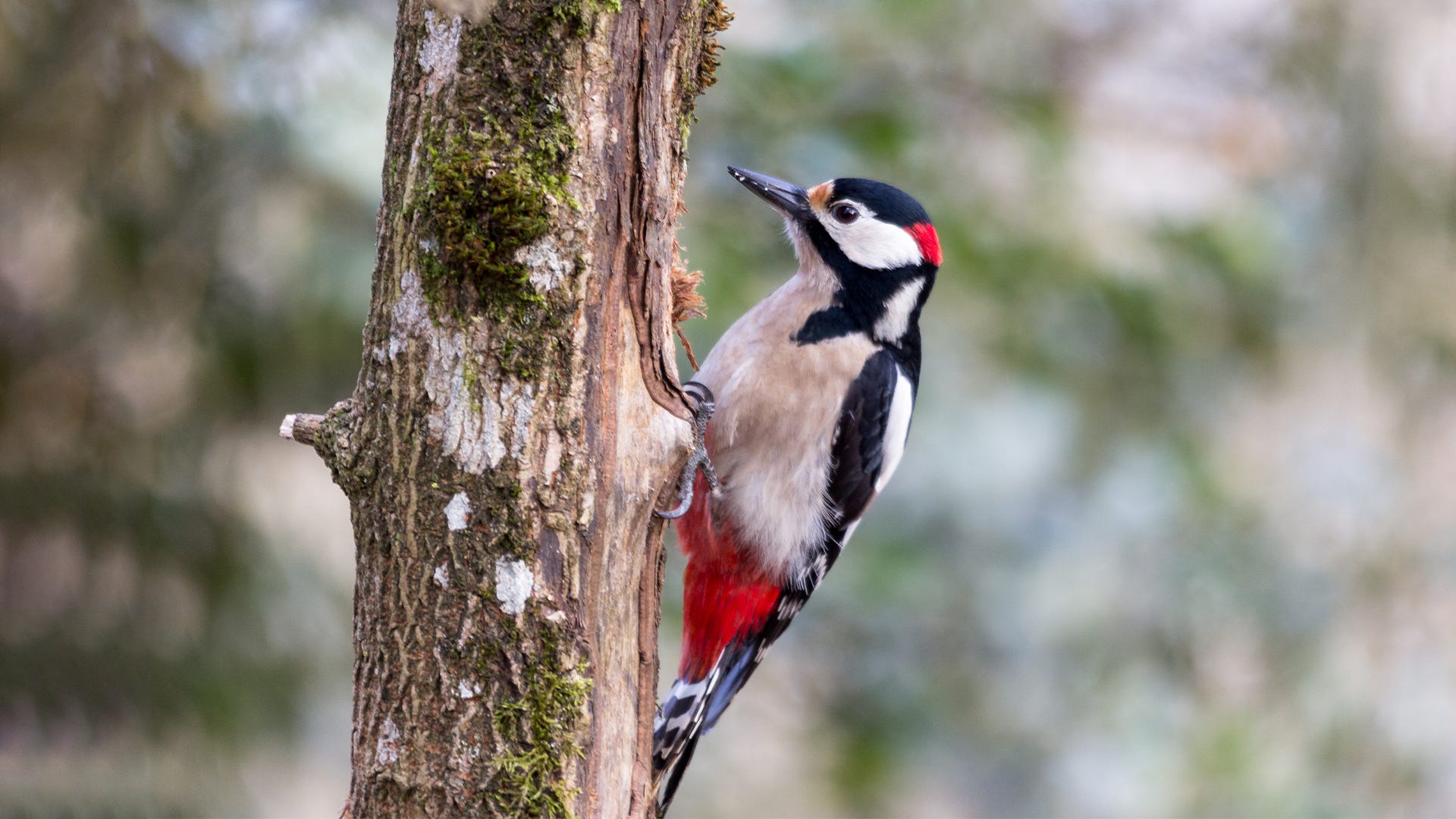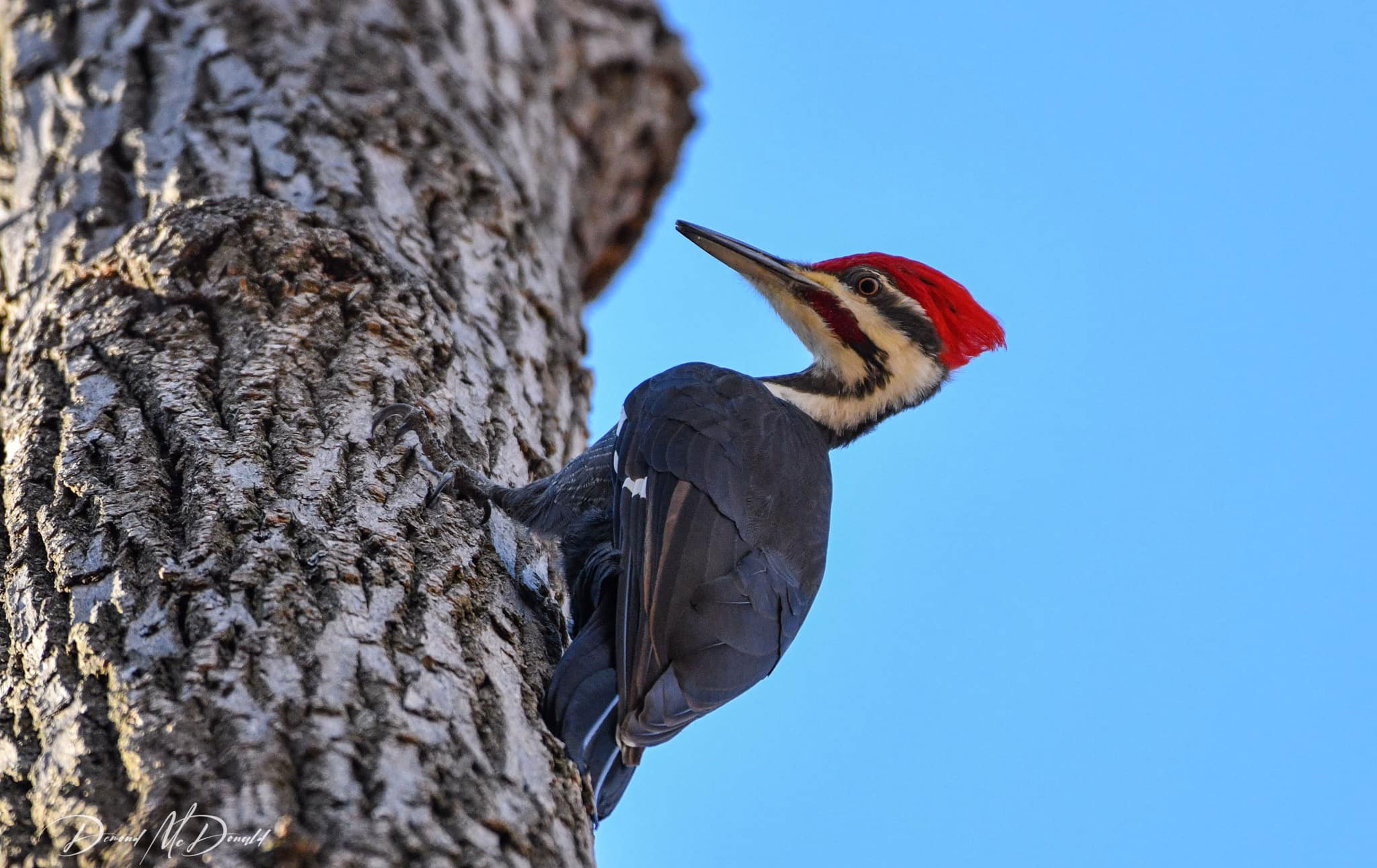Native Woodpeckers in Florida: An Overview to Variety and Behaviors
Wiki Article
Woodpeckers: A Comprehensive Guide to Recognizing These Unique Birds
Woodpeckers, with their unique behaviors and physical characteristics, have actually long astounded the interest of ornithologists and nature fanatics alike. From their balanced drumming echoing through the timbers to their exceptional adaptations for scaling tree trunks effortlessly, these birds offer an interesting study in avian biology. What truly establishes woodpeckers apart is not just their striking look but additionally their essential function in maintaining the fragile balance of ecological communities. As we check out the detailed composition, varied types, and environmental importance of woodpeckers, a much deeper gratitude for these one-of-a-kind birds and the secrets they hold unravels.
Woodpeckers' Drumming Behavior
Woodpeckers show a balanced and precise drumming behavior that offers numerous necessary features in their day-to-days live. This behavior is primarily connected with interaction, region defense, and foraging. The unique drumming noise is created by the fast pecking of their beaks against hard surfaces such as tree trunks, branches, or perhaps steel items.Communication is an essential aspect of woodpecker actions, and drumming plays a considerable role in this procedure. Woodpeckers utilize drumming to develop their existence, attract friends, and preserve call with their partners and offspring. The regularity, intensity, and period of drumming series communicate particular messages to various other woodpeckers in the area.
In enhancement to interaction, woodpeckers use drumming habits for territory protection. Woodpeckers in Florida. The loud and recurring drumming acts as a cautioning to possible trespassers, signaling that the area is currently declared. By developing their territory through drumming, woodpeckers lower the probability of conflicts over useful resources such as food and nesting sites
In addition, woodpeckers likewise use drumming as a foraging technique. The balanced pecking aids them situate bugs hiding beneath the bark of trees by developing resonances that disrupt the prey's concealment. This actions showcases the adaptability and ingenuity of woodpeckers in using their drumming skills for several important functions.
One-of-a-kind Adjustments for Tree Climbing
Having grasped the art of drumming to connect, safeguard territory, and forage, woodpeckers have advanced unique adaptations that promote their remarkable climbing capabilities in their arboreal environments. One vital adaptation is their specialized feet. Woodpeckers have zygodactyl feet, with two toes directing onward and 2 toes pointing backward. This arrangement offers a solid grasp on the upright surface areas of trees, permitting them to cling effortlessly while foraging for insects or drumming. Additionally, woodpeckers possess rigid tail plumes that function as a prop to sustain their bodies as they climb up. These tail plumes give security and equilibrium, making it possible for woodpeckers to maneuver up tree trunks with precision and agility.Additionally, woodpeckers have powerful neck muscular tissues and an unique skull structure that aid in their climbing up capacities. Their strong neck muscle mass allow them to swiftly eat tree bark without experiencing whiplash, while additional reading their thick skull and tiny mind function as shock absorbers, securing them from the effect of repeated drumming. These adjustments collectively enable woodpeckers to browse the upright world of trees with efficiency and poise.

Duty of Woodpeckers in Communities
Playing a crucial role in forest environments, woodpeckers add considerably to the equilibrium and wellness of their habitats through their distinct habits and communications with various other species. One of the essential environmental features of woodpeckers is their role in regulating insect populations. By foraging for insects under the bark of trees, woodpeckers assist control bug populaces, preventing outbreaks that could harm the general health and wellness of the woodland. In addition, woodpeckers develop dental caries in trees that serve as essential nesting sites for a range of other bird species, promoting biodiversity within the community.Furthermore, the drumming and Resources articulations of woodpeckers play an important duty in communication and region establishment. These audios not only serve to bring in mates however also aid define limits in between different woodpecker territories, minimizing problems and promoting an unified conjunction within the woodland community. In general, the existence of woodpeckers in woodland environments highlights their relevance as keystone species, influencing the characteristics and operating of these habitats in complex ways.
Composition: Specialized Beaks and Feet
In the detailed web of original site woodland communities, the specialized beaks and feet of woodpeckers are crucial adaptations that allow them to accomplish their important eco-friendly roles. Woodpeckers have one-of-a-kind anatomical functions that are specifically developed to assist them in their foraging and nesting behaviors.The most distinguishing characteristic of woodpeckers is their strong, chisel-shaped beaks. These beaks are perfectly adjusted for exploration right into wood to discover pests, larvae, and sap hidden below the bark of trees. The strong muscular tissues and sturdy structure of their beaks allow woodpeckers to peck at a price of approximately 20 times per secondly without causing damage to their skulls.
Furthermore, woodpeckers have specialized feet that help in their acrobatic climbing up capacities. Their feet have 2 toes aiming forward and two toes pointing backwards, supplying a solid grasp on upright surface areas (Woodpeckers in Florida). This one-of-a-kind foot setup, along with stiff tail feathers that act as an encouraging prop, allows woodpeckers to hold on to tree trunks and branches effortlessly while they look for food or excavate nesting cavities
Woodpecker Species Diversity
Woodpeckers are a varied group of birds found throughout different ecosystems worldwide, with over 200 well-known types exhibiting adjustments to different environments. Woodpeckers have actually progressed to occupy an array of atmospheres, from forests and timberlands to grasslands and deserts, each offering distinct challenges that have actually influenced the evolution of distinctive woodpecker types.These adjustments enable woodpeckers to forage effectively in their particular environments, reducing competition among types and advertising particular niche differentiation. Additionally, geographic isolation and historic variables have actually played a role in shaping the distribution and diversity of woodpecker types, leading to the large selection of specialized adjustments seen in these remarkable birds.
)
Conclusion
In verdict, woodpeckers are interesting birds that exhibit one-of-a-kind drumming habits, specialized adaptations for tree climbing, and play vital functions in ecosystems. Their makeup, including specialized beaks and feet, allows them to grow in their setting. With a diverse series of woodpecker types discovered worldwide, these birds are necessary for preserving the wellness and balance of forests and timberlands. Recognizing and valuing the intricacies of woodpeckers can provide important insights into the environment.Report this wiki page